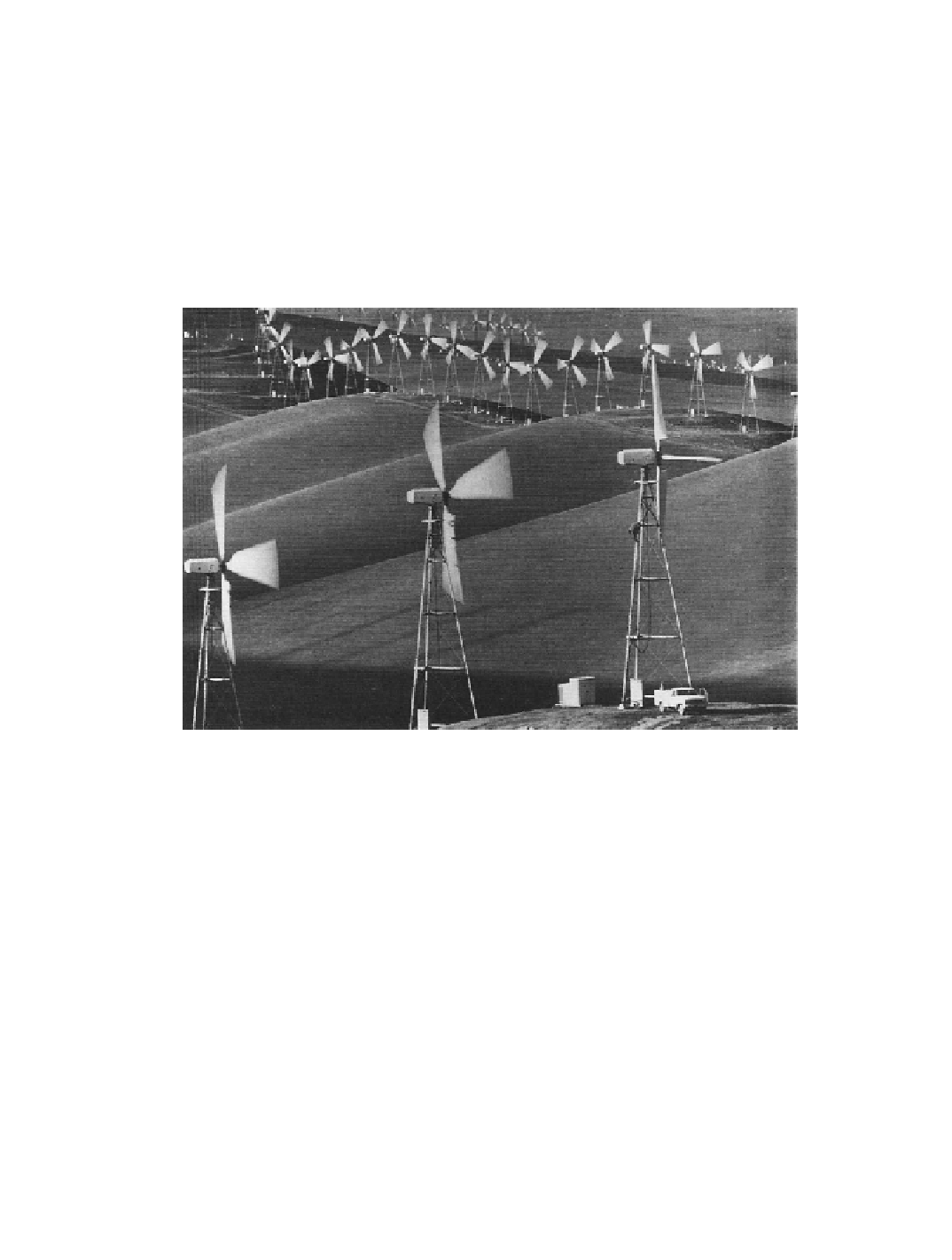Environmental Engineering Reference
In-Depth Information
Early Commercial Wind Turbine Installations
The birth of the modern wind turbine market began in the mid-980s and included a
wide variety of small-, medium-, and large-scale turbines that operated commercially during
this early period. Sketches of some of the wind turbines installed in major U.S. wind power
stations in the 980s are shown in Appendix C, together with pertinent technical data. Wind
power stations were installed on a wide variety of terrains, as shown by the general views in
Figures 4-2 through 4-25. In California, these include the rolling inland terrain of Altamont
Pass (Fig. 4-2), the rugged terrain of the Tehachapi Mountains (Fig. 4-22), and the flat des-
ert areas in San Gorgonio Pass (Fig. 4-23). Two other types of terrain with wind turbines are
represented by the flat high-plains area near Medicine Bow, Wyoming (Fig. 4-24), and the
coastal hills on Oahu in the Hawaiian Islands (Fig. 4-25).
Figure 4-2. Rolling terrain in the Altamont Pass region of California.
Lines of
USW
56-100
HAWTs are normal to the prevailing wind, with spacings larger in the windwise and
smaller in the crosswind directions. (
Courtesy of Kenetech/U.S. Windpower, Inc.
)
While many of the wind turbine models described in Appendix C are no longer being
manufactured, their designs define the scope of commercial wind power development in the
mid-980s. Plant operators have modified many of the medium-scale machines to upgrade
their durability and performance. Retrofitting of rotors, power trains, and yaw drives has
been common, and some power ratings have had to be lowered. Since the mid-980s, many
small-scale turbines have been retired and, in most cases, replaced by larger units. The large-
scale prototype Mod-5B and WTS-4 HAWTs [Johnson and Young 985], built for technol-
ogy development under U.S. Government sponsorship, operated for a number of years as
commercial power plants. No further production of these two machines occurred, however,
because the companies that built them withdrew from the market when oil prices declined in
the late 980s. Many of the design features such as the tubular steel towers and variable speed
generators pioneered by these early multi-megawatt turbines are in wide-spread use today.
Operating experience of the Mod-5B machine over a period of 55 months, including produc-
tion and maintenance data, has been reported by Spera and Miller [992].

Search WWH ::

Custom Search